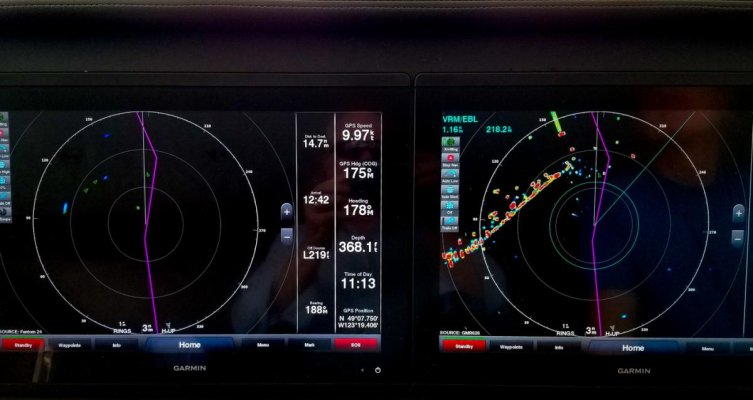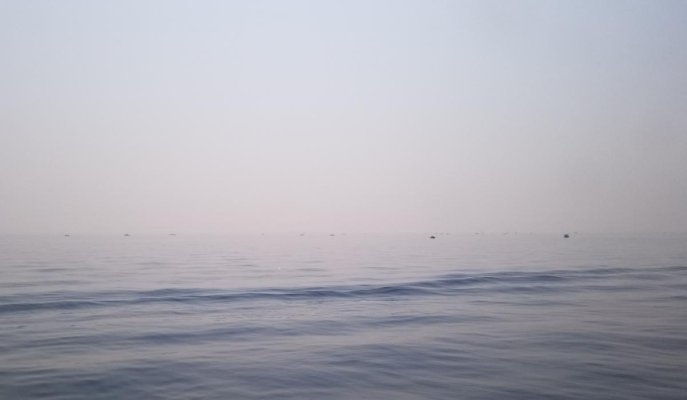JustBob
Senior Member
- Joined
- Apr 12, 2016
- Messages
- 496
- Location
- USA
- Vessel Name
- Mahalo
- Vessel Make
- 2018 Hampton Endurance 658
On Mahalo I have two Garmin radars, a GMR626 XHD2 traditional magnetron radar, and a new Fantom 24 digital radar.
I was tooling along in the Strait of Georgia last week, in intense forest fire smoke. The sky and water were just shades of gray.
I generally just show one radar, typically the Fantom, because the images are a bit more crisp than the other.
I came across what appears to be hundreds of small fishing boats, yet there are just a few blips on the radar. I range out and back in, almost nothing shows?
I fire up the 626 and there are the targets. See the picture for yourself. One thing I didn't think to review is the gain setting on the Fantom. It's probably just at the factory default.
In the second picture you can see what it looked like outside.
I did a little googling and the fire community is excited about doppler radar because it identifies smoke well. Leaves me to wonder if it can see through the smoke or not?
The HYG service guy is going to inquire with Garmin...
I was tooling along in the Strait of Georgia last week, in intense forest fire smoke. The sky and water were just shades of gray.
I generally just show one radar, typically the Fantom, because the images are a bit more crisp than the other.
I came across what appears to be hundreds of small fishing boats, yet there are just a few blips on the radar. I range out and back in, almost nothing shows?
I fire up the 626 and there are the targets. See the picture for yourself. One thing I didn't think to review is the gain setting on the Fantom. It's probably just at the factory default.
In the second picture you can see what it looked like outside.
I did a little googling and the fire community is excited about doppler radar because it identifies smoke well. Leaves me to wonder if it can see through the smoke or not?
The HYG service guy is going to inquire with Garmin...


